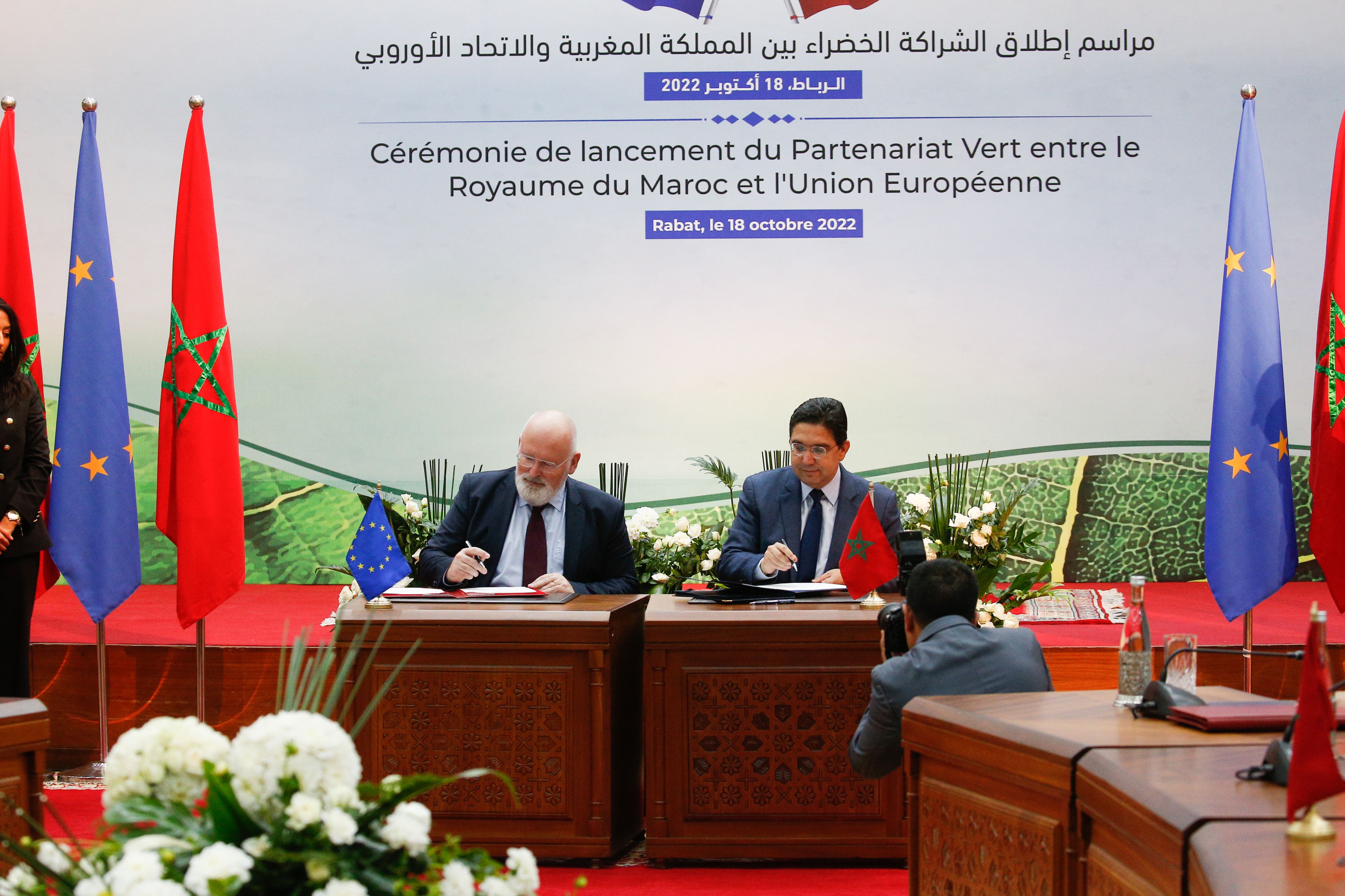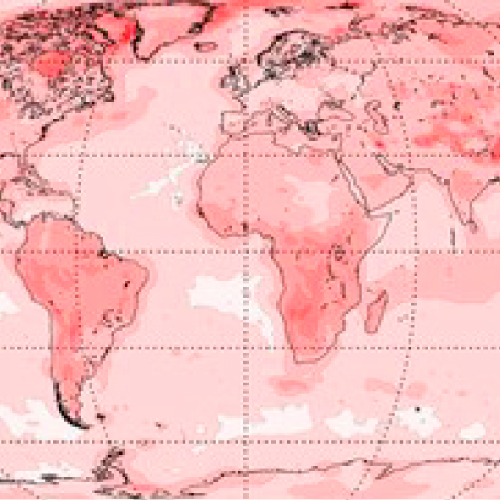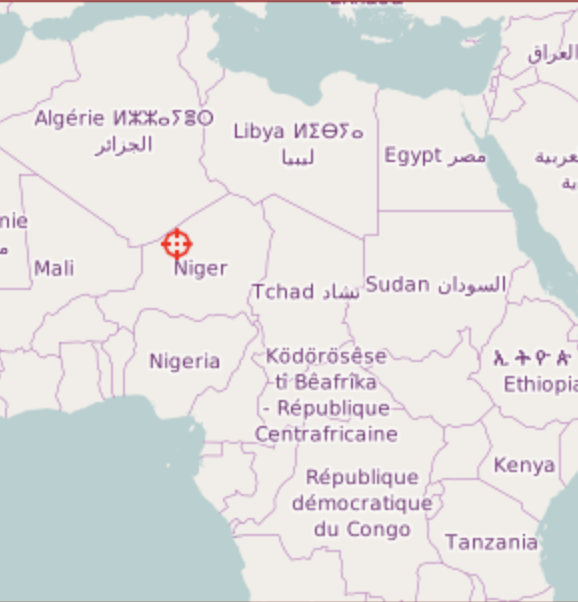Paving the way for a renewable energy transition in the Mediterranean

Analysis by the Intergovernmental Panel on Climate Change (IPCC) plainly shows that global emissions need to be reduced to net-zero within the next few decades to avoid the most dangerous impacts of climate change. Energy is at the heart of the solution to the climate challenge and key to economic prosperity.
The Mediterranean region is largely dependent on oil, gas, and coal. On average, fossil fuels make up 65% of the energy mix in the Northern Mediterranean states and 92% in the South.
On the other hand, the Mediterranean basin has untapped potential for the deployment of renewable energy sources.
Renewable energies exploit natural resources such as wind, sunshine, tides and river flow, among others, to produce electricity with far fewer GHG emissions, or none at all.
Each type of renewable energy has its own constraints and advantages, and some are better adapted to the Mediterranean.
Wind power harnesses the wind to generate electricity. Wind power is the second most prevalent form of renewable energy in the Mediterranean region: at present, most wind turbines are installed on land (onshore) and only a small number are installed at sea (offshore). The large area required for deployment can be an obstacle to installation projects, while the falling cost of wind turbines is an incentive. Climate projections have indicated that there are no strong trends to changes in wind regimes over the Mediterranean. Such factors could influence the feasibility of offshore wind farms in the years to come.
Solar panels convert the sunlight received on a photovoltaic cell into electricity. It is the third biggest source of renewable energy in the Mediterranean region. Generally, solar is underexploited in the southern regions of the Mediterranean, with only 2.7% of the total capacity in solar energy used. Though the decreasing cost of solar panels is boosting their accessibility, there are operational challenges in a Mediterranean context. For instance, solar panels lose efficiency when operating at high temperatures - typically around 35°C - and when exposed to dust storms.
Geothermal power uses natural heat stored in the ground to form electricity. Unaffected by climate change, it could be a valuable source of energy in the Mediterranean region, which has high levels of geothermal resources. Decreasing costs may lead to increased geothermal exploitation.
Biomass refers to production of energy from organic matter, such as wood, agricultural waste, and other materials from plants or animals. It is a popular source of renewable energy in the southern regions of the Mediterranean. Biomass is sometimes the only source of renewable energy in remote rural areas - but stocks need to be carefully managed to ensure biomass energy is carbon neutral. In general, biomass resources are limited in the Mediterranean region.
Tidal power makes electricity from the movement of tides in the ocean and has proven a reliable and predictable source of clean energy. In the Mediterranean region, however, tidal energy production is limited due to insufficient tidal ranges. Critical infrastructure may also be susceptible to rising sea levels caused by climate change.
Hydropower generates electricity from the movement of water and is the largest source of renewable energy in the Mediterranean region. It is highly efficient and the production of electricity can be adjusted to meet demand. However, there are very few rivers or streams which could be sustainably exploited by new hydropower plants in the Mediterranean region. With climate change, modified hydrological patterns may affect water availability and hydropower generation capacity.
Deployment of renewable energy has reached unprecedented levels in the Mediterranean basin - but with strong regional disparities.
There are gaping differences in the share of renewables between Mediterranean countries, for instance.
For instance, the share of renewables in total energy consumed in 2021 was less than 5% in North Africa, compared to 22% in the EU. In the Middle East, the share of renewables in final energy consumption is less than 1%.
However, the potential for upscaling renewable energy around the Mediterranean is excellent.
The favorable climate shared by these countries represents a sizeable resource for solar and wind power generation. In North Africa alone, supposing 1% of land use dedicated to electricity production, the installable capacity is estimated at 2800 GW for solar power - compared to the 85 GW of solar power that are currently installed for the entire Mediterranean region.

Source: International Energy Agency and the United Nations Statistics Division. "Modern" renewables excludes traditional uses of biomass.
Source: International Energy Agency and the United Nations Statistics Division. "Modern" renewables excludes traditional uses of biomass.

Source: IRENA, Renewable Energy Statistics.
Source: IRENA, Renewable Energy Statistics.
Expanding renewable energy capacity is entrenched in the EU’s Long Term Climate Strategy, with the recent Fit for 55 legislation package heightening ambition even more. The Green Partnership Deal signed between the EU and Morocco in October 2022 exemplifies how Mediterranean countries can work together to make progress on climate goals.

But there are significant challenges in moving from policy to action.
On one hand, selecting new sites for exploitation of solar, wind, or hydraulic power requires careful planning which factors in climate suitability, extent of existing infrastructure, and cost considerations. On the other hand, a rising share of renewables makes the energy system more exposed to climate variability and climate change.
Climate data can help meet these challenges and support heightened deployment of renewable energy in the Mediterranean region and the world.
The Copernicus Climate Change Service and Copernicus Atmosphere Monitoring service provide free, quality assured data with multiple uses for the energy sector.
Climate data makes it possible to identify optimal sites to implant renewables and plan for grid extension. Using datasets on wind speed and solar irradiation, it is possible to develop tailored maps to assess the potential yield of wind and solar generation sites. Similarly, data on snow, ice, and river flow and runoff can support site selection for hydroelectric dams. In terms of grid planning, climate data helps assess when cables should be buried underground.
Copernicus data can also support solar farm operations. Forecasts from the Copernicus Atmosphere Monitoring Service (CAMS) are used by solar power operators, for example through provision of surface solar radiation data, or products to help them adapt to adverse conditions linked to dust storms or high aerosol concentrations.
Climate predictions from the Copernicus Climate Change Service (C3S) can be used to plan medium term operations through seasonal forecasts.
Finally, climate projections help adaptation practitioners assess the long term viability of energy infrastructure (e.g. solar and wind farms) under future climate scenarios, by supporting production estimates and maintenance planning. Climate change is expected to alter the demand, for example through additional cooling of homes, as well as potentially impact the supply of energy.


Many datasets within the Climate and Atmosphere Data Stores are relevant for the renewable energy sector:

ERA5 daily single level
Reconstruction of past climate from 1959 to present.

Climate & energy indicators from reanalysis
Surface air temperature from 1979 to present.

Climate & energy indicators from projections
Temperature anomaly from 2005 to 2100.

Seasonal forecast
Seasonal forecast daily and subdaily data on single levels.

Total-sky surface solar irradiation
Time series of solar radiation, from 2004 to present-day.

CAMS global reanalysis (EAC4) monthly averaged fields
Reconstruction of past atmospheric composition from 2003 to present.

Global forecasts of aerosol - dust (3 bins)
Daily forecasts of dust concentration up to five days in advance.

CAMS global atmospheric composition forecasts
Global forecast for atmospheric composition, including past data since 2015.
Supporting data service needs across the Mediterranean
Across the Mediterranean, the need for greater accessibility of climate data and guidance for its use and interpretation is felt. These needs differ by sub-region.
In the North, renewables are well implanted and energy grids very dense compared to the Southern and Eastern Mediterranean. The International Renewable Energy Agency (IRENA) and others aim to close the gap between countries that have access to updated energy data and those that lack such services.

The ERA5 reanalysis dataset, available via the Climate Data Store, played a key role in the development of several global wind atlases that the IRENA's Global Atlas for Renewable Energy hosts.

Visualization of the dataset with the ERA-5 Explorer application
Visualization of the dataset with the ERA-5 Explorer application
Launched in 2009 and updated in 2021, the Global Atlas tool allows users to overlay data on renewable energy potential with other ancillary data (transmission networks, population density, and protected areas). It covers all renewable technologies – solar, wind, bioenergy, geothermal, hydropower, and marine energy.
Overview of the IRENA Global Atlas Tool
Overview of the IRENA Global Atlas Tool
IRENA also uses the ERA5 reanalysis data to calculate hourly power generation profiles over the best zones to host solar photovoltaic and wind projects with their corresponding zone-specific characteristics, considering the country-specific context. The hourly power generation profiles will be integrated into the IRENA Global Atlas by next year.
In addition, the Agency conducts site-specific pre-feasibility studies for renewable projects using higher resolution data generated through a downscaling process of the ERA5 reanalysis data.
“ERA5 reanalysis data and its downscaled products have been instrumental in supporting IRENA member states in project planning and development.”
An open-source, open-access dataset for renewable energy in Africa was recently published. This dataset identifies the most cost-effective and efficient locations for new power plants in Africa.
"There are other parameters to take into account than future changes in climate. The drop in costs for capital expenses, for instance. If grid extension was free, it would be obvious : choose the sunniest sites, the windiest sites. But these sites can be isolated so that it is not cost efficient to exploit the resources."
The renewable energy localization dataset was developed using the ERA5 reanalysis hourly dataset, coupled with grids and roads, population, landscape, and land use datasets. Currently, the supply regions dataset only covers solar panels and onshore wind power, but other forms of renewable energy could be included in the future.
This dataset has the potential to be applied worldwide and aid policymakers and governments in investing in power plant parks at the lowest cost with optimal resources.

In conclusion, a wealth of data is available to support the energy sector: from supporting site selection, production planning and maintenance, to long term viability assessments. Given the need to de-carbonise our energy systems in the coming decades and the abundance of renewable resources in the Mediterranean region, the potential for uptake and development of added value solutions based on these state-of-the-art datasets is immense.
A key player for climate action, the Union for the Mediterranean has recognized this opportunity. The UfM has teamed up with Copernicus to provide capacity training and enhance sector readiness.


The widespread adoption and sustainable use of all forms of renewable energy, including bioenergy, geothermal, hydropower, ocean, solar and wind energy, is essential in the pursuit of many objectives of the UN 2030 agenda for sustainable development, chiefly energy access, energy security and low-carbon economic growth and prosperity.
Development of renewable energy programs also contributes to the SDGs, namely SDG 13 (climate action) and SDG 7 (affordable and clean energy).
Sources
1. Observatoire Méditerranéen de l'Energie (2022) The Mediterranean Energy Perspectives 2022, available at https://www.ome.org/wp-content/uploads/2023/01/MEP2022-Executive-Summary.pdf
2. International Energy Agency (2022) Modern Renewables data, available at https://www.iea.org/reports/sdg7-data-and-projections/modern-renewables
3. European Environment Agency (2022) Share of energy consumption from renewable sources in Europe, available at https://www.eea.europa.eu/ims/share-of-energy-consumption-from
4. IRENA (2022), Renewable Energy Statistics 2022, International Renewable Energy Agency, Abu Dhabi. Available at https://www.irena.org/-/media/Files/IRENA/Agency/Publication/2022/Jul/IRENA_Renewable_energy_statistics_2022.pdf?rev=8e3c22a36f964fa2ad8a50e0b4437870
5. International Renewable Energy Agency (2022) Renewable Energy Market Analysis: Africa and its Regions, available at https://www.irena.org/-/media/Files/IRENA/Agency/Publication/2022/Jan/IRENA_Market_Africa_2022.pdf?rev=bb73e285a0974bc996a1f942635ca556
6. IRENA Global Atlas, available at https://www.irena.org/Energy-Transition/Project-Facilitation/Renewable-potential-assessment/Global-Atlas
7. Sterl, S., Hussain, B., Miketa, A. et al. An all-Africa dataset of energy model “supply regions” for solar photovoltaic and wind power. Sci Data 9, 664 (2022). https://doi.org/10.1038/s41597-022-01786-5




